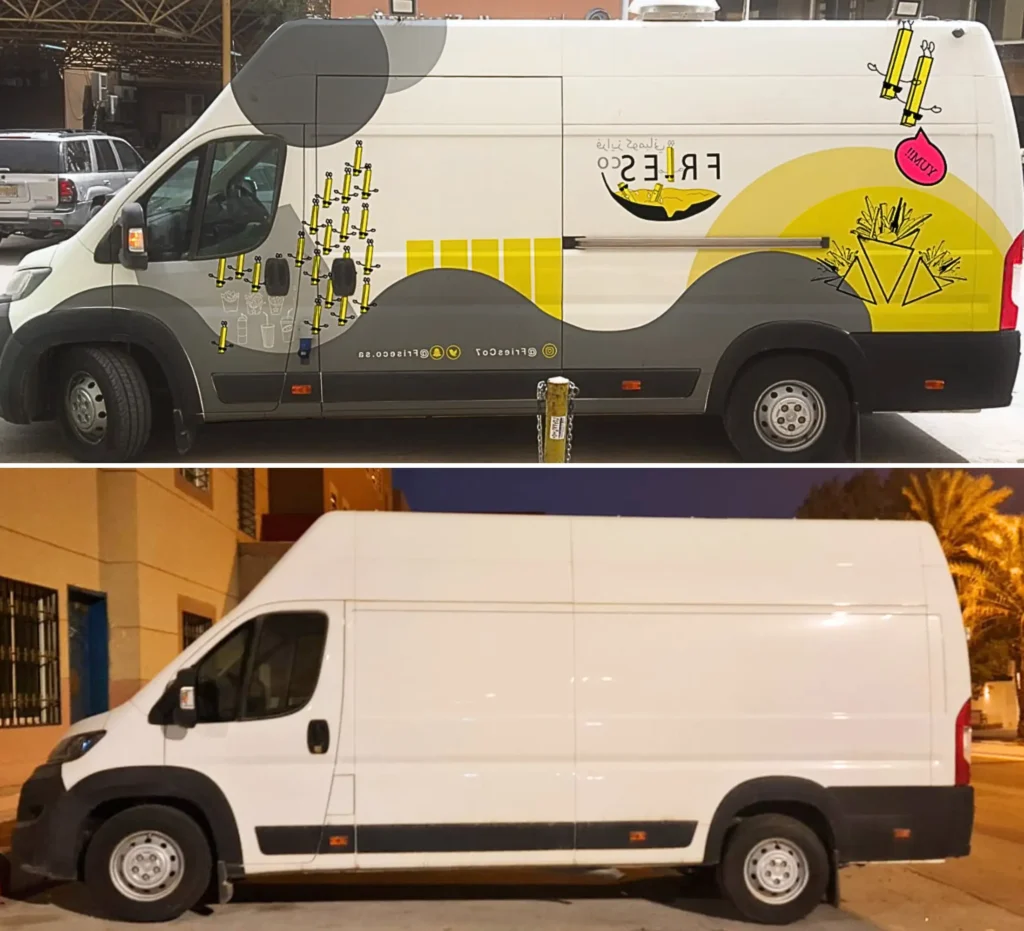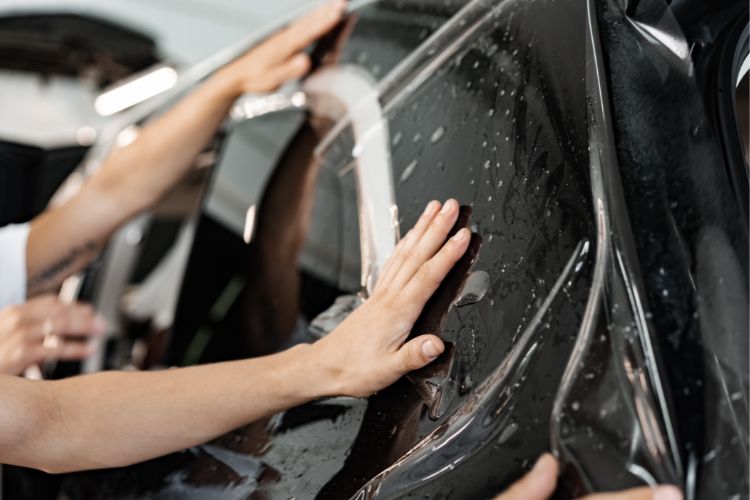Mobile Advertising
With the development of mobile advertising, stickers have become one of the most prominent and effective modern advertising tools. These stickers are often applied to cars, trucks, or other vehicles, serving as moving billboards. However, constant exposure to environmental factors such as sunlight and rain can noticeably affect the quality of these stickers. In this article, we will discuss the impact of these environmental factors on stickers, how to ensure their quality lasts as long as possible, and how mobile advertising is affected by these environmental challenges.
What is Mobile Advertising?
Mobile advertising is a modern form of advertising that relies on stickers applied to vehicles such as cars, buses, and trucks. This type of advertising is an innovative marketing method that offers an excellent opportunity to reach a wide audience in urban areas and on highways.
The main advantages of mobile advertising are its low cost and wide reach since the advertisement moves continuously and reaches audiences in various locations. With such broad exposure, maintaining the quality of stickers is essential to keep the advertisement attractive and clear for as long as possible.
Sunlight and Its Effect on Sticker Quality
Sunlight is one of the environmental factors that directly affects sticker quality, especially when stickers are exposed to it for long periods. Ultraviolet (UV) rays emitted by the sun cause several problems that can harm sticker quality, including:
Fading Colors: UV rays break down the dyes used in manufacturing stickers. Over time, this causes colors to fade and stickers to appear dull and unclear. When colors are faded or washed out, the advertisement loses its impact on viewers.
Material Degradation: Heat from sunlight can cause the materials used in stickers to expand and contract. This repeated expansion and contraction may cause cracks or wrinkles on the surface, distorting the sticker and reducing its quality.
Adhesive Weakening: The adhesive materials used to attach the sticker to surfaces can weaken due to continuous sun exposure. This leads to the sticker peeling off the vehicle surface or adhesive degradation, making the sticker ineffective after some time.
Rain, Humidity, and Their Effect on Stickers
Rain and humidity are also significant environmental factors affecting vehicle stickers. Continuous exposure to moisture or rain can cause several problems related to sticker quality:
Damage to Inner Layers: Water may seep into the inner layers of stickers, causing deterioration and weakening the bond between different materials. This results in the sticker peeling or breaking down.
Mold Growth: In humid climates, mold may develop on stickers. Mold not only affects the sticker’s appearance but can also permanently damage it, making it less visible.
Water Leakage: If there are cracks or damage to the sticker caused by moisture, rainwater may leak into the adhesive areas, weakening the sticker’s grip and causing loss of effectiveness.
Types of Stickers Resistant to Sunlight and Rain
To address these challenges and protect stickers from sunlight and rain damage, several specialized sticker types offer enhanced protection against these environmental factors. Here are some options:
Vinyl Stickers: Vinyl is one of the most weather-resistant materials. Vinyl stickers designed for mobile advertising ensure durability and resistance to UV rays and rain.
UV-Resistant Stickers: Some stickers come with protective layers against UV rays, maintaining color vibrancy and preventing wear due to prolonged sun exposure.
Water-Resistant Stickers: Certain stickers are specially designed to resist water, making them ideal for rainy or humid environments. These provide extra protection against water leakage or internal layer damage.
How to Maintain Sticker Quality Against Environmental Factors
Here are some tips to help maintain sticker quality and ensure continued effectiveness:
Choose High-Quality Stickers: Select stickers made from premium materials like UV-resistant vinyl. This ensures colors stay vibrant longer.
Regular Maintenance: Clean stickers regularly using specialized products to protect them from dirt and water. Avoid strong cleaning agents that can damage the sticker.
Use Protective Coatings: Applying protective coatings on stickers can increase their resistance to sun and rain. These coatings add an extra layer of defense against environmental elements.
Avoid Prolonged Direct Sun Exposure: If possible, avoid leaving vehicles in direct sunlight for extended periods, especially if the stickers are new. This helps reduce sticker degradation.
How Does Sticker Quality Affect Mobile Advertising Effectiveness?
Sticker quality significantly impacts the effectiveness of mobile advertising. If stickers become worn out or faded due to prolonged environmental exposure, the advertisement loses its appeal and ability to attract attention. High-quality stickers maintain their appearance and attractiveness longer, increasing the chances of engaging the target audience and boosting interaction with the advertisement.
Conclusion
Sunlight and rain significantly affect sticker quality and the effectiveness of mobile advertising. To ensure continuous performance, advertisers should choose weather-resistant stickers, maintain them regularly, and use advanced protection techniques. With advancements in sticker manufacturing technologies, advertisers can now benefit from innovative solutions to sustain their vehicle stickers and advertisements for longer periods, with the support of professionals like Al-Omari Agency.









